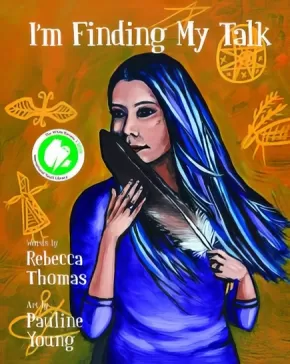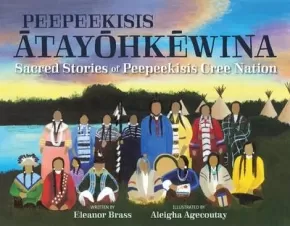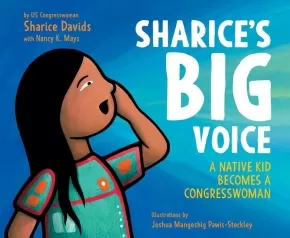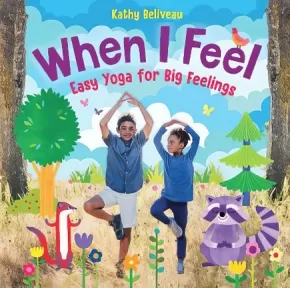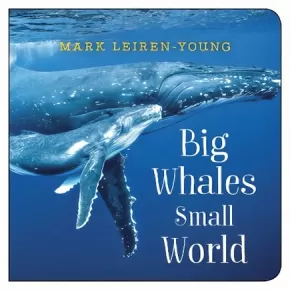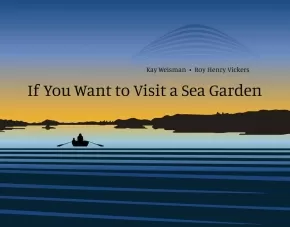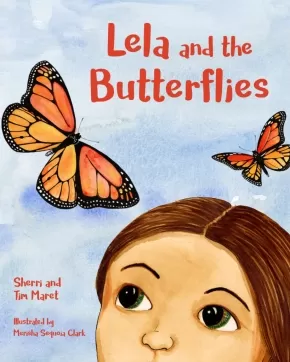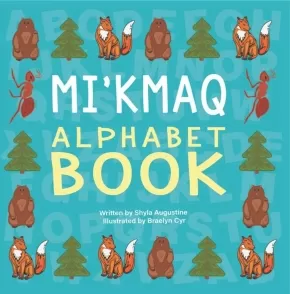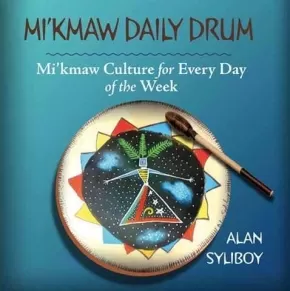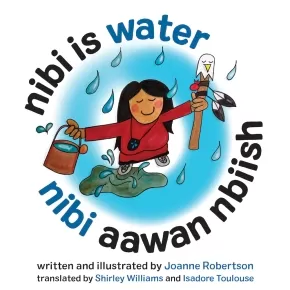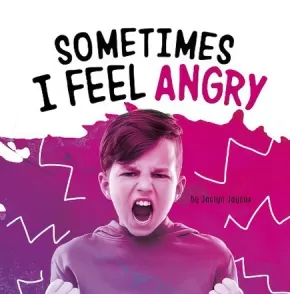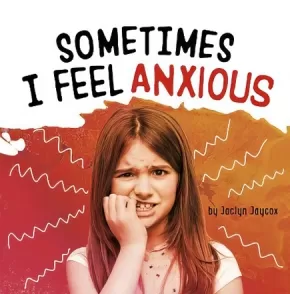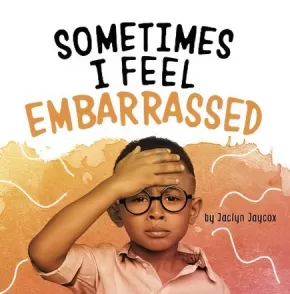
Nonfiction
106
-
120
of
203 Results;
Sort By
Go To
of 14
I Lost My Talk (PB)
$13.95
Artists:
Format:
Paperback
Text Content Territories:
Indigenous Canadian; First Nations; Mi'kmaq;
ISBN / Barcode: 9781774710050
Synopsis:
Synopsis:
I lost my talk
The talk you took away
When I was a little girl
At Shubenacadie school.
One of Rita Joe's most influential poems, "I Lost My Talk" tells the revered Mi'kmaw Elder's childhood story of losing her language while a resident of the residential school in Shubenacadie, Nova Scotia. An often quoted piece in this era of truth and reconciliation, Joe's powerful words explore and celebrate the survival of Mi'kmaw culture and language despite its attempted eradication.
A companion book to the simultaneously published I'm Finding My Talk by Rebecca Thomas, I Lost My Talk is a necessary reminder of a dark chapter in Canada's history, a powerful reading experience, and an effective teaching tool for young readers of all cultures and backgrounds. Includes a biography of Rita Joe and striking colour illustrations by Mi'kmaw artist Pauline Young.
Reviews
"This picture book version of I Lost My Talk is best read with Rebecca Thomas’s I’m Finding My Talk. These haunting, evocative books bring an original approach to the exploration of Canadian residential schools in picture books. For readers and teachers who appreciate fact-based information, there is also “A Short History of Residential Schools” at the end of I Lost My Talk. Educators, librarians, and families will find their classrooms and book collections invaluably enriched by these books. They are real tools of truth and reconciliation; as such, they belong on every bookshelf in Canada and beyond." - CM Reviews
Educator Information
Recommended for ages 4 to 9.
This work features a short history of residential schools and information about the author.
Recommended in the Canadian Indigenous Books for Schools 2020/2021 resource list for grades 1-7 for English Language Arts.
Additional Information
32 pages | 8.00" x 10.00"
I'm Finding My Talk (PB)
$13.95
Artists:
Format:
Paperback
Text Content Territories:
Indigenous Canadian; First Nations; Mi'kmaq;
ISBN / Barcode: 9781774710067
Synopsis:
Synopsis:
I'm finding my talk
And it may take some time,
But I'm learning to speak
In a language that's mine.
A response to Rita Joe's iconic poem "I Lost My Talk," and published simultaneously with the new children's book edition illustrated by Pauline Young, comes a companion picture book by award-winning spoken-word artist and Mi'kmaw activist Rebecca Thomas. A second-generation residential school survivor, Thomas writes this response poem openly and honestly, reflecting on the process of working through the destructive effects of colonialism.
From sewing regalia to dancing at powow to learning traditional language, I'm Finding My Talk is about rediscovering her community, and finding culture. Features stunning, vibrant illustrations by Mi'kmaw artist Pauline Young.
Reviews
"Published as a companion to the picture book I Lost My Talk, featuring the famous poem by Rita Joe, both volumes explore the legacy of Canada’s residential schools. They feature vibrant illustrations by Pauline Young that bring the words alive with emotional nuance. This remarkable pair of books possesses the rare ability of being suited to readers of all ages: three to six-year-olds, the traditional intended audience of picture books, will be captivated by the bright, lively illustrations; elementary and middle school children will find their Social Studies curriculum enriched by experiencing these important concepts rendered creatively; teens and adults will gain insight and empathy by enjoying these beautiful poems." - CM Reviews
"[A]n honest reflection on the process of working through the destructive effects of colonialism by participating in cultural connections. This book offers the opportunity to show the journey one takes when rediscovering their community and culture." - The Dalai Lama Center
Educator Information
Recommended for ages 4 to 9.
Recommended in the Canadian Indigenous Books for Schools 2020/2021 resource list for grades 1-3 in the areas of Social Studies and Language Arts.
Former Halifax Poet Laureate and second-generation residential school survivor Rebecca Thomas writes honestly and powerfully in this companion piece to Rita Joe's I Lost My Talk. Includes vibrant illustrations from Mi'kmaw artist Pauline Young.
Additional Information
32 pages | 8.00" x 10.00"
Peepeekisis Ātayōhkēwina: Sacred Stories Of Peepeekisis Cree Nation
$19.95
Format:
Paperback
Text Content Territories:
Indigenous Canadian; First Nations; Cree (Nehiyawak); Plains Cree; Peepeekisis Cree Nation;
ISBN / Barcode: 9781988783635
Synopsis:
Synopsis:
These stories from the Peepeekisis Cree Nation tell of the Little People, Wesuketchuk, and the Sky People, and share the Plains Cree worldview, values, and spiritual beliefs.
“nipakosēyimon ēkā ta-wanihtāhk kinēhiyawātisinaw, tāpitaw awiyak ta-masinahahk ēkwan ta-pīkiskwātahk.” --Eleanor Brass, 1987
“I am hoping that our Indian culture will not be lost, that there will always be someone to write and speak about it. As the treaty reads, ‘As long as the grass grows and the water flows.’” —Eleanor Brass, 1987
Educator Information
Recommended for ages 3 to 12.
Dual-language: English and Plains Cree (y-dialect).
Pronunciation guide included.
Additional Information
96 pages | 11.00" x 8.50"
Sharice's Big Voice: A Native Kid Becomes a Congresswoman
$21.99
Format:
Hardcover
ISBN / Barcode: 9780062979667
Synopsis:
Synopsis:
This picture book autobiography tells the triumphant story of Sharice Davids, one of the first Native American women elected to Congress, and the first LGBTQ congressperson to represent Kansas.
When Sharice Davids was young, she never thought she’d be in Congress. And she never thought she’d be one of the first Native American women in Congress. During her campaign, she heard from a lot of doubters. They said she couldn’t win because of how she looked, who she loved, and where she came from. But here’s the thing: Everyone’s path looks different and everyone’s path has obstacles. And this is the remarkable story of Sharice Davids’ path to Congress.
Beautifully illustrated by Joshua Mangeshig Pawis-Steckley, an Ojibwe Woodland artist, this powerful autobiographical picture book teaches readers to use their big voice and that everyone deserves to be seen—and heard!
Educator Information
Recommended ages 4 to 8.
The back matter includes information about the Ho-Chunk written by former Ho-Chunk President Jon Greendeer, an artist note, and an inspiring letter to children from Sharice Davids.
Additional Information
40 pages | 11.00" x 9.00"
When I Feel: Easy Yoga for Big Feelings
$19.95
Artists:
Format:
Hardcover
Grade Levels: Preschool; Kindergarten;
ISBN / Barcode: 9781459825840
Synopsis:
Synopsis:
Sometimes I feel angry, so I become the sea. I breathe in deep an ocean breath and breathe out peacefully. We may not be able to help the overwhelming feelings, but we can learn tools to help us regulate them. Practicing yoga can increase our ability to accept and mindfully manage our emotions. Yoga is known to have a positive physiological effect on practitioners of all ages and abilities.
When I Feel: Easy Yoga for Big Feelings offers effective yoga poses and breathing practices that help children embrace healthy ways of acknowledging their emotions. The rhythmic text and repetition engage young readers and support early literacy skills while the photographs layered with illustrations will show readers each pose in a playful way.
Reviews
“Fun, interactive, engaging and age-appropriate. Highly Recommended.” — CM: Canadian Review of Materials
Educator Information
Recommended for ages 3 to 5.
This book is from co-creator of our Strong Nations Yoga Cards!
Encourages social-emotional learning for mental health and physical well-being.
Additional Information
24 pages | 8.00" x 8.00" | Colour illustrations and photographs | Hardcover
Big Whales, Small World (BB)
$10.95
Format:
Board Book
Grade Levels: Preschool;
ISBN / Barcode: 9781459825024
Synopsis:
Synopsis:
Take a dive in the oceans of the world with whales big and small!
In Big Whales, Small World you will meet whales from around the world. This rhyming photographic board book visits the oceans of places like New Zealand, Russia and South America. Writer, filmmaker and orca activist Mark Leiren-Young introduces young readers to blue whales bigger than dinosaurs and tiny vaquitas who swim close to shores.
Educator Information
Board book for ages 0-2.
Young readers learn one interesting fact about each marine mammal in this clever, rhyming board boook.
It is illegal to take underwater pictures of certain endangered whales. All of the photos in this book were sourced and taken legally.
Keywords / Subjects: whales of the world, ocean, environment, sea mammals, orcas, endangered animals, marine life.
Additional Information
24 pages | 7.00" x 7.00"
If You Want to Visit a Sea Garden
$18.99
Format:
Hardcover
Text Content Territories:
Indigenous Canadian;
ISBN / Barcode: 9781554989706
Synopsis:
Synopsis:
Discover the wonder of ancient sea gardens on the Northwest Coast
Sea gardens have been created by First Peoples on the Northwest coast for more than three thousand years. These gardens consist of stone reefs that are constructed at the lowest tide line, encouraging the growth of clams and other marine life on the gently sloped beach.
This lyrical story follows a young child and an older family member who set out to visit a sea garden early one morning, as the lowest tides often occur at dawn. After anchoring their boat, they explore the beach, discover the many sea creatures that live there, hear the sputtering of clams and look closely at the reef. They reflect on the people who built the wall long ago, as well as those who have maintained it over the years. After digging for clams, they tidy up the beach, then return home.
An author’s note provides further information about sea gardens (also known as clam gardens), which yield a reliable food source and have been traditional places of learning. They have been found along the Pacific coast, from Alaska to British Columbia to Washington State, and some of these gardens are being restored today.
The manuscript has been vetted and approved by the scientists of the Clam Garden Network and Kwaxsistalla Wathl’thla Clan Chief Adam Dick. Roy Henry Vickers, whose ancestry includes the Tsimshian, Haida and Heiltsuk First Nations, has created hauntingly beautiful images to accompany the text.
Reviews
“The text and illustrations combine grace and knowledge, offering a stunning nonfiction picture book that celebrates First Nations cultural traditions.” — School Library Journal
“This engaging tale is a natural for lessons about ecology and units on Indigenous peoples, and the illustrations will pop for story-hour audiences.” — Booklist
Educator Information
Recommended for ages 5 to 8.
Recommended in the Indigenous Books for Schools 2020/2021 resource list as being useful for grades K to 3 for Science and Social Studies.
Additional Information
32 pages | 10.25" x 8.50"
Inuit Tools of the Western Arctic - Nunavummi Reading Series
$10.95
Artists:
Format:
Paperback
Text Content Territories:
Indigenous Canadian; Inuit;
ISBN / Barcode: 9781774500583
Synopsis:
Synopsis:
There are many tools used in the western part of the Arctic! Learn about these tools and their different uses, from softening skins to pounding seal fat.
Educator & Series Information
This book is part of the Nunavummi Reading Series, a Nunavut-developed series that supports literacy learning while teaching readers about the people, traditions, and environment of the Canadian Arctic. It is a Level 8 book in the series.
Nunavummi Reading Series books have also been officially levelled using the Fountas & Pinnell Text Level Gradient™ Levelling System. This book's F&P Level is K.
Recommended for ages 5 to 7.
Additional Information
20 pages | 7.00" x 9.00"
Lela and the Butterflies
$20.95
Artists:
Format:
Hardcover
ISBN / Barcode: 9781630763824
Synopsis:
Synopsis:
Lela loves butterflies. When Lela takes a nature walk with Ranger Maggie, she learns that butterflies need help. Lela's small steps in butterfly conservation start with a butterfly garden of nectar and host plants, but she doesn't stop there and ends up spreading her love for butterflies throughout the community. A simple guide to planting a butterfly garden is also included.
Reviews
Beautifully written and illustrated, Lela and the Butterflies is jam-packed with interesting facts about butterfly biology, ecology and butterfly gardening, craftily woven into the story of a little girl named Lela who loves butterflies. The book is so entertaining and appealing that readers young and old will acquire butterfly knowledge without even realizing that they are learning. - Johanna Davey, Hershey Gardens
Educator Information
Recommended for ages 5 to 9.
Additional Information
32 pages | 8.49" x 10.36"
Mi'kmaq Alphabet Book (BB)
$14.95
Artists:
Format:
Board Book
Text Content Territories:
Indigenous Canadian; First Nations; Mi'kmaq;
Grade Levels: Preschool;
ISBN / Barcode: 9781999042714
Synopsis:
Synopsis:
From Ant (Gligoetjit) to Wolf (Paqtism) and beyond, the Mi'kmaq Alphabet Book is sure to delight the young and the young at heart. Braelyn Cyr's vibrant illustrations are a delightful pair to Shyla Augustine's first baby board book.
Additional Information
26 pages | 7.00" x 7.00" | Board Book
Mi'kmaw Daily Drum: Mi'kmaw Culture for Every Day of the Week (BB)
$14.95
Artists:
Format:
Board Book
Text Content Territories:
Indigenous Canadian; First Nations; Mi'kmaq;
Grade Levels: Preschool;
ISBN / Barcode: 9781771088893
Synopsis:
Synopsis:
A baby board book from the bestselling artist behind Mi'kmaw Animals that teaches young readers Mi'kmaw concepts and a Mi'kmaw word for each day of the week.
From celebrated artist Alan Syliboy, this vital book for the youngest readers showcases seven of Syliboy’s popular Daily Drum artworks, each paired with a different day of the week. From Spirit Woman to Caribou to Round Dance, Mi’kmaw culture and teachings are offered up to newborns and toddlers in a vibrant and accessible book.
Educator Information
Recommended for ages 3 and under.
Includes references to Muin, the eight-point star, the round dance, and Spirit Woman.
Additional Information
10 pages | 7.00" x 7.00" | Boardbook
Nibi is Water (BB)
$12.95
Artists:
Format:
Board Book
Text Content Territories:
Indigenous Canadian; First Nations; Anishinaabeg; Ojibway;
Grade Levels: Preschool;
ISBN / Barcode: 9781772601329
Synopsis:
Synopsis:
Nibi is water and water is life.
A first conversation about the importance of Nibi—which means water in Anishinaabemowin (Ojibwe)—and our role to thank, respect, love, and protect it. Babies and toddlers can follow Nibi as it rains and snows, splashes or rows, drips and sips. Written from an Anishinaabe water protector’s perspective, the book is in dual language—English and Anishinaabemowin (Ojibwe).
Educator Information
Board Book for ages 0 - 3 / Preschool.
A board book for babies and toddlers that introduces the importance of water and water protection. Indigenous water protectors, like author Joanne Robertson, are highly respected environmentalists in Canada and across North America. Joanne Robertson is the author and illustrator of the award-winning picture book The Water Walker.
Dual-language: Anishinaabemowin (Ojibwe) and English. Dual-language books are important in all of our efforts to support the Truth and Reconciliation Commission of Canada's Call to Action, specifically the call to promote, support, and teach Indigenous languages.
Subjects: Character Education (Strong Female Role Models); Environmentalism; History & Social Studies (Canadian History, First Nations & Indigenous Peoples, Social Justice).
Translated by Shirley Williams and Isadore Toulouse.
Additional Information
28 pages | 7.00" x 7.00"
Sometimes I Feel Angry
$10.99
Format:
Paperback
ISBN / Barcode: 9781977126405
Synopsis:
Synopsis:
What does it mean to be angry? Anger may not make us feel good, but it's an emotion everybody has! Children will learn how to identify when they are angry and ways to manage their feelings. Large, vivid photos help illustrate what anger looks like. A mindfulness activity will give kids an opportunity to explore their feelings.
Reviews
"Young children need to learn how to understand and manage their emotions. This series describes emotions, how to identify them, and examples of what might cause them. Readers are also encouraged to recognize how their senses might influence their mood; smelling flowers might make them happy, but hearing the word “no” might make them grumpy. There are suggestions for handling emotions, such as listening to music or journaling. Directions for a mindfulness activity like deep breathing or making a gratitude list are included at the end of each book. The simple prose uses age-appropriate examples, and photos of children from diverse racial and ethnic backgrounds support each section. Further reading and websites are featured in the back matter. VERDICT A useful purchase for guidance lessons or general classroom discussions on handling emotions." — Suzanne Costner, Fairview Elementary, Maryville, TN, School Library Journal
Educator & Series Information
Recommended for ages 5 to 8.
This book is part of the Name Your Emotions series.
Additional Information
24 pages | 8.00" x 8.00" | Paperback
Sometimes I Feel Anxious
$10.99
Format:
Paperback
ISBN / Barcode: 9781977126450
Synopsis:
Synopsis:
What does it mean to be anxious? It's an emotion everyone has. Children will learn how to recognize when they are feeling anxious and examples of good ways to manage their emotion. A mindfulness activity will give kids the opportunity to practice managing their feelings.
Reviews
"Young children need to learn how to understand and manage their emotions. This series describes emotions, how to identify them, and examples of what might cause them. Readers are also encouraged to recognize how their senses might influence their mood; smelling flowers might make them happy, but hearing the word “no” might make them grumpy. There are suggestions for handling emotions, such as listening to music or journaling. Directions for a mindfulness activity like deep breathing or making a gratitude list are included at the end of each book. The simple prose uses age-appropriate examples, and photos of children from diverse racial and ethnic backgrounds support each section. Further reading and websites are featured in the back matter. VERDICT A useful purchase for guidance lessons or general classroom discussions on handling emotions." — Suzanne Costner, Fairview Elementary, Maryville, TN, School Library Journal
Educator & Series Information
Recommended for ages 5 to 8.
This book is part of the Name Your Emotions series.
Additional Information
24 pages | 8.00" x 8.00" | Paperback
Sometimes I Feel Embarrassed
$10.99
Format:
Paperback
ISBN / Barcode: 9781977126429
Synopsis:
Synopsis:
What does it mean to be embarrassed? Learn what embarrassment feels like and what may trigger this emotion. Children will explore different ways to deal with their feelings and turn bad feelings into good ones. A mindfulness activity will give kids the chance to practice managing their emotion.
Reviews
"Young children need to learn how to understand and manage their emotions. This series describes emotions, how to identify them, and examples of what might cause them. Readers are also encouraged to recognize how their senses might influence their mood; smelling flowers might make them happy, but hearing the word “no” might make them grumpy. There are suggestions for handling emotions, such as listening to music or journaling. Directions for a mindfulness activity like deep breathing or making a gratitude list are included at the end of each book. The simple prose uses age-appropriate examples, and photos of children from diverse racial and ethnic backgrounds support each section. Further reading and websites are featured in the back matter. VERDICT A useful purchase for guidance lessons or general classroom discussions on handling emotions.— Suzanne Costner, Fairview Elementary, Maryville, TN, School Library Journal
Educator & Series Information
Recommended for ages 5 to 8.
This book is part of the Name Your Emotions series.
Additional Information
24 pages | 8.00" x 8.00" | Paperback
Sort By
Go To
of 14




